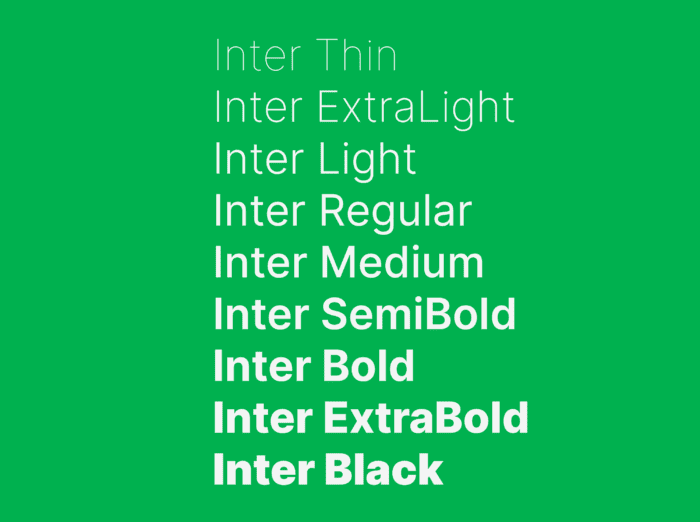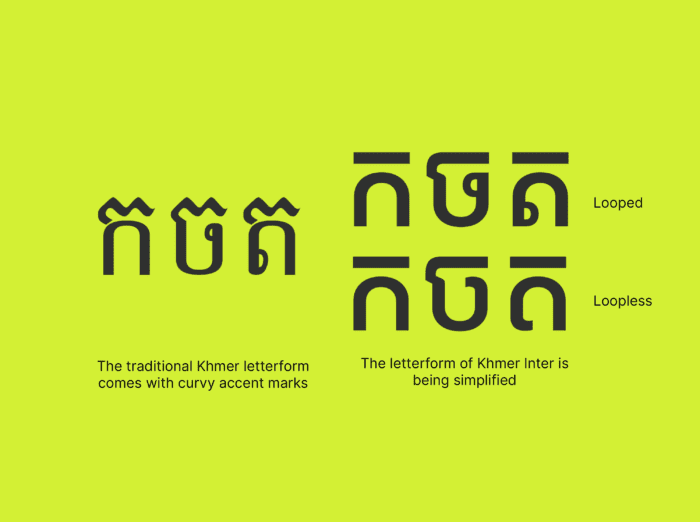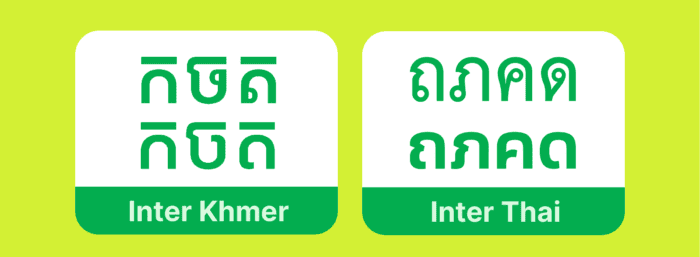Designing a typeface for an app involves both art and design practices; you want fonts that are aesthetically beautiful and evocative, but that are also functional and serve the app’s objectives.
For Southeast Asian languages, that design process is even more complex because you have to cater to scripts with large character sets and diacritics—marks, shapes or strokes that accompany letters.
Compared with global support for western scripts such as the Latin alphabet, there is a big gap in font and script compatibility in Southeast Asia. This prevents local businesses from building better, clearer apps and websites.
Plus, bringing an app to older operating systems on entry-level devices also means they tend to display illegible or corrupted text, because these phones don’t have new fonts installed. Typically, these display as misaligned symbols and misrendered squares where text should be, for example.
As Grab’s user base continued to expand across Southeast Asia, we had to ensure that text displayed on our app could reach disparate devices effectively, and for local language versions to not be impacted.
This required not only technical expertise, but also a deep understanding of language and script. In Thailand and Cambodia, we worked with boutique design firms Cadson Demak and Anagata Design respectively, to better articulate our design language in the region.
The origin: Inter
Prior to creating Thai and Khmer typefaces, Grab’s designers were in search of a new Latin typeface that could represent Grab’s visual identity and product experience.
There were practical considerations too. Lower-end phones are still predominant in many parts of Southeast Asia. These phones typically run on 2G or 3G networks, and have smaller screens and lower memory capacity.
The file size of a font family will therefore have a significant impact on the overall user experience on the app. An app that requires a huge amount of storage may not be well-supported by lower-end phones.
Grab’s design and creative teams conducted a series of testing of over 40 typefaces and landed on Inter.

Inter is a typeface that was originally designed for computer screens, allowing it to remain legible even at smaller font sizes and is suitable for longer reads.
Inter is also a variable font family, meaning it is able to hold various font styles (i.e. bold, italics) in a much smaller file size. This is compared with traditional web fonts—such Grab’s previous font Sanomat—where each style requires a separate font file.
Inter, but make it Thai and Khmer
It took a considerable amount of time to work out the design for the Thai and Khmer versions of Inter due to the large character set of both languages, according to the designers.
There are two prominent Thai and Khmer font types, looped and loopless—just like how there are Sans and Sans Serif fonts in Latin.
Thai and Khmer typefaces also consist of base characters combined with tone marks or diacritics that may be displayed above or below them.
“For Khmer, specifically, some letter shapes had been simplified and straightened to ease the process of rendering the letterform on screen,” said Sovichet Tep, type director of Anagata Design.

“This is due to the complex letterform of Khmer that has two tiers above and two below the consonant. Simplifying the letterforms would help to harmonise [the typeface] with the other script counterparts within the project too,” he said.
Thai and Khmer scripts are also long. The same sentence that takes up one line in English may go on for two to three lines in Thai and Khmer, resulting in shifts in the layout of text.
We wanted the finished product to be a family member, not a Frankenstein twin.
Anuthin Wongsunkakon, type designer and founding partner of Cadson Demak
That is why lines, loops and marks that affect the height of fonts need to be adjusted in a way where we do not have to make changes to the app’s interface for every language we support.
“Proportion is the key element. It is the first priority to pin down,” said Anuthin Wongsunkakon, type designer and founding partner of Cadson Demak.
The finished product should bear some resemblance to the Latin counterpart and at the same time, remain aesthetically pleasing and legible to the native eye, he said.
“We wanted the finished product to be a family member, not a Frankenstein twin,” he added.
Studying the ends and curves of Inter’s typeface, the designers found ways to adapt elements of the font while retaining the integrity and identity of the Thai and Khmer scripts.
“It’s important for this multi-script font design to maintain the script integrity and familiarity. That would lead to better legibility and readability when in use,” said Tep.
Why Southeast Asia is held back by font availability

The lack of access to the right typefaces have hindered some businesses from localising their products and services. This prevents many local users from accessing these services because they might not be comfortable in English.
Meanwhile, companies that are open to using Southeast Asian scripts struggle to find typefaces that align with their brand identities, said Anagata Design’s Tep.
Better support for fonts in more languages can help businesses reach a wider audience and would be key to improving access to information and technology.
Furthermore, more companies are beginning to recognise the importance of catering to the specific local nuances of various markets they operate in.
3 Media Close,
Singapore 138498
Komsan Chiyadis
GrabFood delivery-partner, Thailand
COVID-19 has dealt an unprecedented blow to the tourism industry, affecting the livelihoods of millions of workers. One of them was Komsan, an assistant chef in a luxury hotel based in the Srinakarin area.
As the number of tourists at the hotel plunged, he decided to sign up as a GrabFood delivery-partner to earn an alternative income. Soon after, the hotel ceased operations.
Komsan has viewed this change through an optimistic lens, calling it the perfect opportunity for him to embark on a fresh journey after his previous job. Aside from GrabFood deliveries, he now also picks up GrabExpress jobs. It can get tiring, having to shuttle between different locations, but Komsan finds it exciting. And mostly, he’s glad to get his income back on track.

